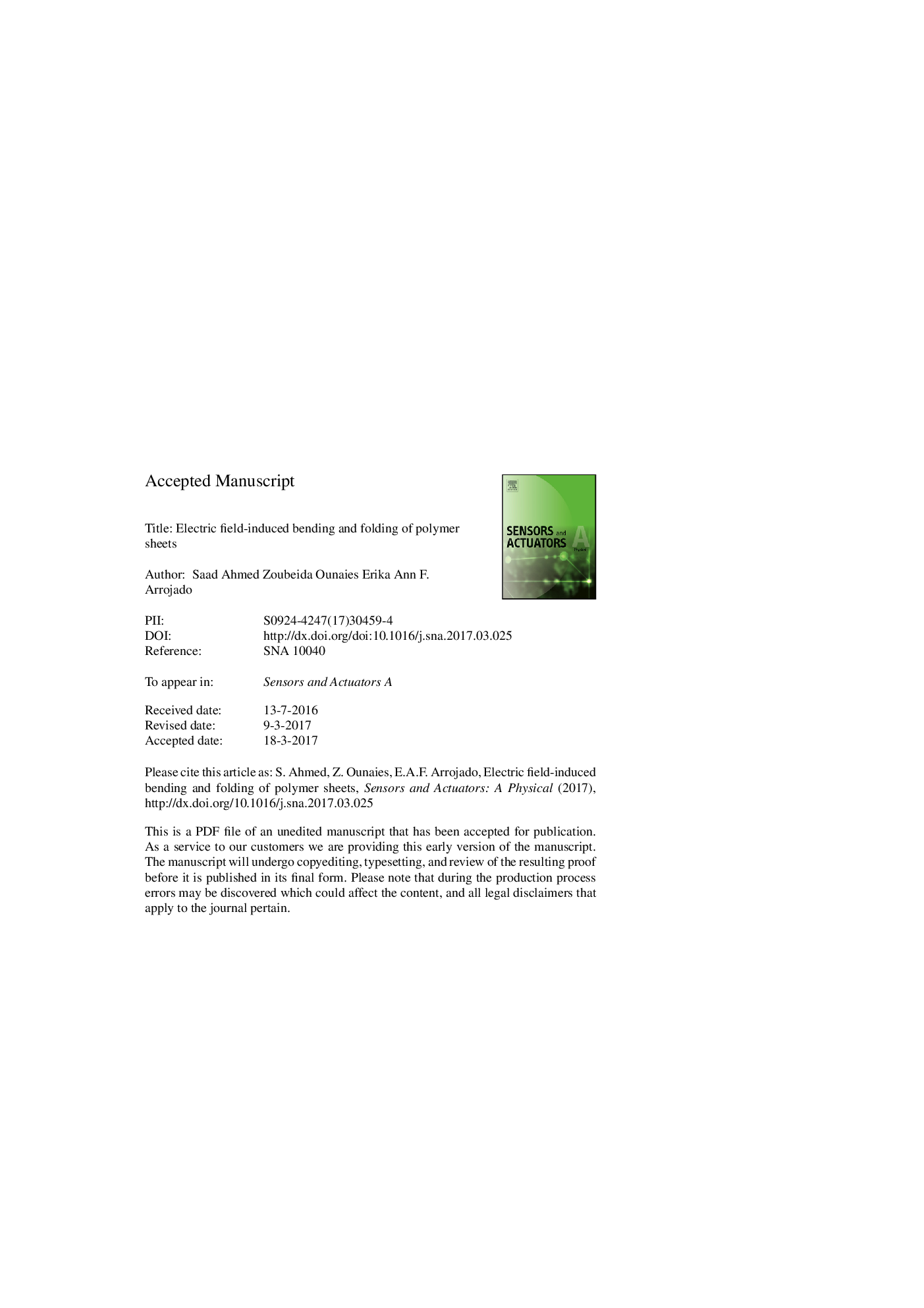| Article ID | Journal | Published Year | Pages | File Type |
|---|---|---|---|---|
| 5008301 | Sensors and Actuators A: Physical | 2017 | 34 Pages |
Abstract
Electroactive polymers (EAPs) show great promise in realizing self-folding of structures due to their lightweight, flexibility, relatively high electromechanical strain and their ability to be fabricated in multiple shapes. However, EAP actuators also possess drawbacks that impede their implementation in applications, namely they induce relatively low force and require high actuation voltages. In this work, we propose to address these issues through a multilayered actuator unimorph concept. Due to the complex fabrication process of multilayered unimorphs and the large number of experimental parameters, we have developed an analytical model to guide the experimental design and fabrication of these actuators. The model is based on a set of non-dimensional equations for electric field-induced curvature, tip displacement and blocked force, taking into account the wide range of design parameters (such as thickness, modulus, number of layers, electric field magnitude, etc.) We have selected P(VDF-TrFE-CTFE) terpolymer as the model EAP because of its high electrostrictive coefficient and large electromechanical strain. First, analytical results are validated with experimental studies, then the model is used to predict the displacement, curvature, blocked force and maximum work output of bending multilayered actuator unimorphs for various input parameters such as thickness, modulus, number of layers, electric field and stiffness contrast. An advantage of this combined modeling and experimental approach is the ability to maximize the performance of the designed actuator for the particular application of interest; for example, whether displacement or force is the goal would determine the number of layers and type of substrate used. Finally, using insights from this model, we experimentally demonstrate the realization of active self-folding structures and action origami structures.
Related Topics
Physical Sciences and Engineering
Chemistry
Electrochemistry
Authors
Saad Ahmed, Zoubeida Ounaies, Erika Ann F. Arrojado,
